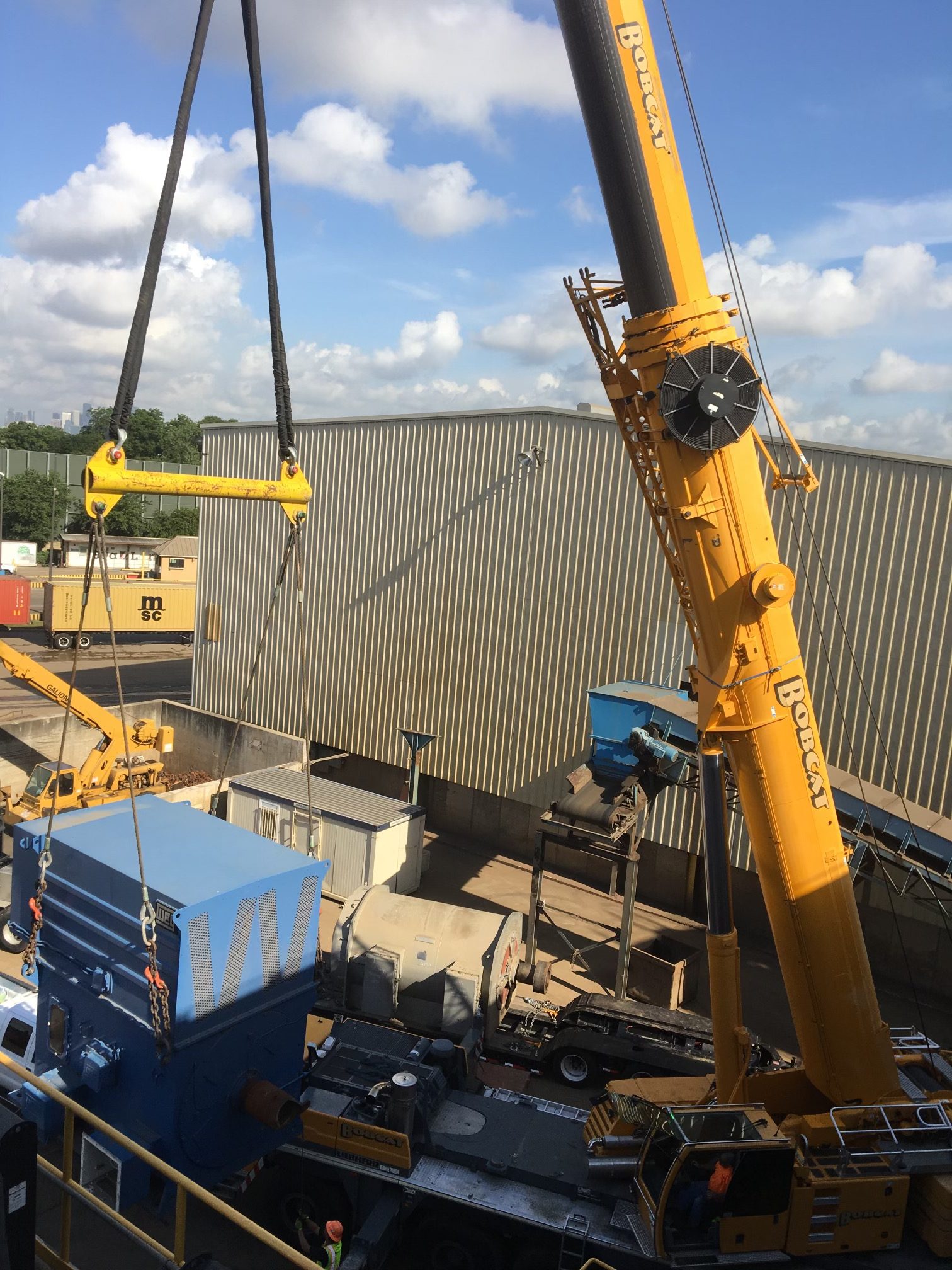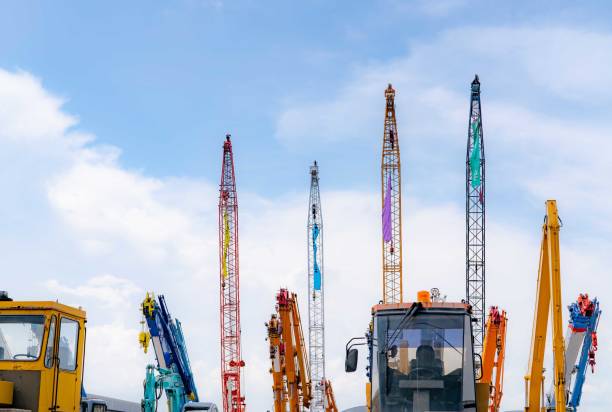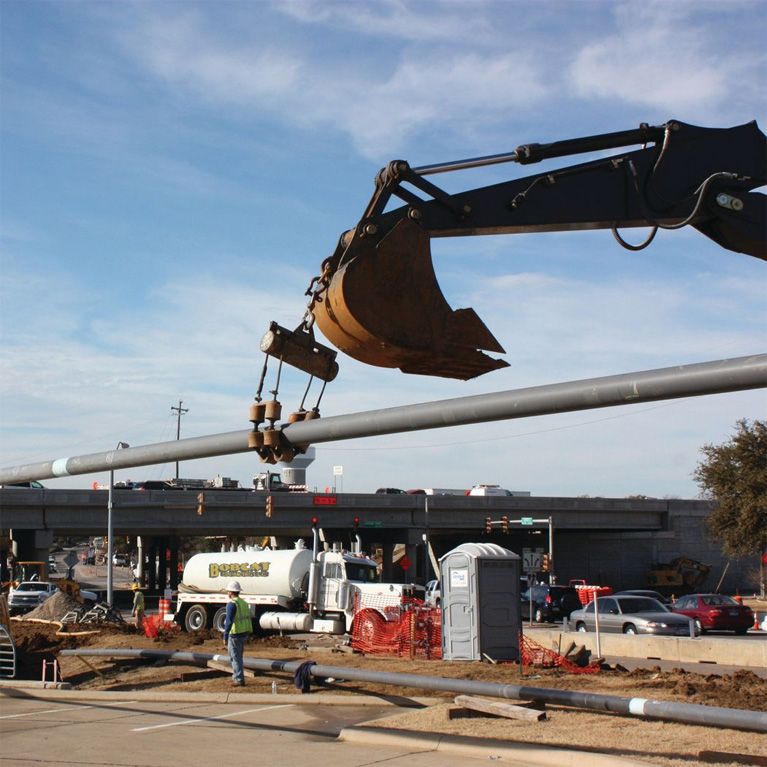
Behind every successful construction project is a network of systems working seamlessly together, and rigging is one of the most essential. More than just lifting heavy materials, rigging ensures safety, precision, and efficiency on even the most complex job sites. From high-rise builds to infrastructure and industrial work, proper cranes and rigging protect teams and keep operations on track.
What Is Construction Rigging?
Construction rigging refers to the process of preparing and using equipment to lift, secure, and move heavy loads. This includes assembling the components needed to safely handle loads with cranes or hoists. Rigging can involve moving steel beams, concrete panels, heavy machinery, or even prefabricated structures into place.
The rigging process isn’t just about attaching a few slings to a crane hook. It requires thorough knowledge of physics, materials, weight distribution, and environmental factors. Riggers must account for the load’s center of gravity, lifting angles, and the capacity of the equipment being used.
Improper rigging can lead to catastrophic results—damaged equipment, project delays, and even loss of life. As a result, rigging is not only a technical task but also a safety-critical operation, governed by strict OSHA regulations and industry standards.
Construction Rigger Jobs and Responsibilities
Riggers are highly trained professionals responsible for setting up and managing rigging systems on construction sites. Their role extends beyond simply tying knots or attaching hooks—they are central figures in ensuring the secure and efficient movement of materials.
Key responsibilities of a construction rigger include:
- Load Assessment: Riggers must evaluate the weight and shape of the load and determine the safest way to lift it.
- Rigging Planning: Developing lifting plans, selecting the proper rigging gear, and determining anchor points are all part of their duties.
- Equipment Inspection: Before any lift, riggers inspect slings, hooks, chains, and other hardware for signs of wear, damage, or defects.
- Safety Monitoring: They monitor conditions during lifts, ensuring that loads remain stable and that all personnel follow safety protocols.
- Communication: Riggers often work closely with crane operators, using hand signals or radios to coordinate movements during a lift.
The role of a rigger demands technical expertise, physical strength, and situational awareness. Without qualified riggers, construction projects would face major operational and safety risks.
Types of Rigging Equipment
Rigging involves a wide variety of tools and equipment, each designed for specific loads and applications. The choice of rigging equipment depends on the load’s weight, size, and configuration, as well as environmental conditions such as wind and terrain.

Close-up mobile crane, yellow bulldozer, and blue backhoe parked at second-hand machinery auction yard against blue sky. Heavy machinery for rent and sale. Crane dealership for construction business.
Common types of rigging equipment include:
- Slings: These are flexible lifting devices made from wire rope, chain, or synthetic fibers. Slings connect the load to the lifting mechanism and come in various configurations, such as single-leg, multi-leg, and endless loops.
- Shackles: U-shaped metal connectors used to attach slings, chains, and ropes to loads or lifting devices. They are critical for creating secure connections.
- Turnbuckles: Devices used to adjust the tension in cables and slings, especially useful when fine-tuning the load’s position.
- Eyebolts and Swivels: Installed on equipment or materials to serve as anchor points for rigging gear.
- Chains and Wire Ropes: Used in heavier applications, these are prized for their durability and ability to handle large loads.
Choosing the right equipment is just as important as using it correctly. Each component must be inspected and rated for the specific job, and riggers must be trained in the proper use of each piece.
Rigging Hooks
Rigging hooks are among the most recognizable and widely used components in the lifting process. These hooks come in different shapes and designs, each suited to a particular type of lift or load.
Types of rigging hooks include:
- Eye Hooks: These have a permanent attachment point and are commonly used with slings.
- Clevis Hooks: Equipped with a pin or bolt at the base, these allow for easy removal and adjustment.
- Swivel Hooks: These rotate 360 degrees, preventing the rope or chain from twisting during a lift—a useful feature for complex loads.
- Sorting Hooks: Designed with wide throats, these are ideal for handling bundles or irregularly shaped materials.
Safety latches on hooks prevent loads from slipping, and the hook’s load rating must match or exceed the weight of the item being lifted. Rigging professionals must understand which hook is best for each scenario, as using the wrong type can compromise safety.
Lifting Blocks and Pulleys
Blocks and pulleys play a vital role in distributing load weight and changing the direction of force. These systems enable workers to lift heavier loads with less effort and are often used when direct lifting is not feasible.
Lifting blocks are typically used in conjunction with cranes or hoists and consist of one or more pulleys enclosed in a frame. The rope or wire passes over the pulleys to increase lifting capacity through mechanical advantage.
Benefits of using lifting blocks and pulleys:
- Reduced Force Requirements: By spreading the weight over multiple lines, less force is needed to lift the load.
- Increased Precision: These tools allow for more controlled movements, reducing the risk of swinging or load imbalance.
- Flexibility: Blocks and pulleys can be arranged in different configurations, depending on the space and direction of the lift.
Like all rigging equipment, lifting blocks and pulleys must be properly rated, maintained, and used according to best practices to ensure site safety.
Contact Bobcat Contracting for Crane and Rigging Services
Rigging is the backbone of safe, successful construction, and at Bobcat Contracting, we treat it like the art it is. From rooftop lifts to massive steel placements, our expert riggers and cutting-edge equipment handle it all with unmatched precision and care. We serve projects of every size across industries, ensuring every lift is safe, smooth, and on schedule.
Contact Bobcat Contracting today to learn more about our crane and rigging services.


